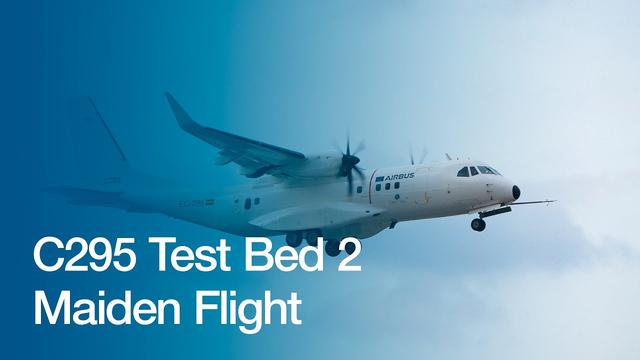Airbus puts into flight a technology demonstrator based on the C295
The Airbus C295 FTB2 technological demonstrator aircraft has successfully completed its first flight in Seville, where the final assembly line for Airbus C295 aircraft is located. With this milestone, the aircraft begins a flight campaign in which it is planned to test the design of a new highly efficient wing, a new flight control system and a satellite communication antenna integrated into the aircraft fuselage.
In the words of the Executive Vice President of Engineering of Airbus Defense and Space, FranciscoJavier Sánchez Segura, this flight represents "a key milestone that represents an important step forward in the program after the integration of the new aerostructures and the success of the system ignition tests and the tests on land”. Just a few years ago, recalls the senior executive, "this program was just a dream with which we set out to achieve more sustainable aviation." And now, he added, "we are in the final phase and, finally, we have made it fly."
The FTB2 is an aircraft based on a C295 configured as a flight demonstrator for the Clean Sky 2 (CS2) initiative, or Clean Sky 2, in Spanish, and for the European Union's Horizon 2020 research and innovation program. Its goal is to test technologies for future CS2 multi-mission regional aircraft.

Modifications that have been incorporated include new materials and technologies designed to reduce noise levels and CO2 (carbon dioxide) and NOx (nitrogen oxides) emissions. The creators of the demonstrator explain that with the application of these technologies in a future multi-mission regional configuration, a reduction of up to 43% of CO2 and 70% of NOx could be achieved in a standard search and rescue mission of 400 nautical miles, and with a level noise during takeoff 45% lower.
Innovative flight controls
The main modifications of the plane are the innovative design of a highly efficient wing, new dynamic winglets (aerodynamic devices used in the tips of the wings) and a flat antenna for satellite communications integrated in the upper part of the fuselage.
In addition, the aircraft features innovative flight controls for the primary control surfaces (such as ailerons, flaps and flap trims with better aerodynamics), which are able to adapt in flight and contribute to greater system efficiency. of hyperlift. Its new flight control system uses digital control systems to optimize the wing's aerodynamic profile during flight, and a new multifunctional flap has been redesigned that incorporates trailing edge trims and is operated by electromechanical actuators.
Manufacturing improvements
The advantages incorporated in the demonstrator also extend to the production process, especially due to the use of materials and advanced manufacturing methods “ranging from the use of Scalmalloy and additive manufacturing, to new techniques for assembling the aerostructures of the wing”, he explains the company in a statement. The one-step assembly method has been used for the new winglets, and composite winglet compensators, as well as developing a torsion box with integrated stringers.
Finally, we have used formulas for mounting flaps and ailerons without tools.
As a result of all these modifications, the C295FTB2 brings improvements not only in the strictly operational aspects of the aircraft, but also contributes to introduce improvements in the design and manufacturing process.








